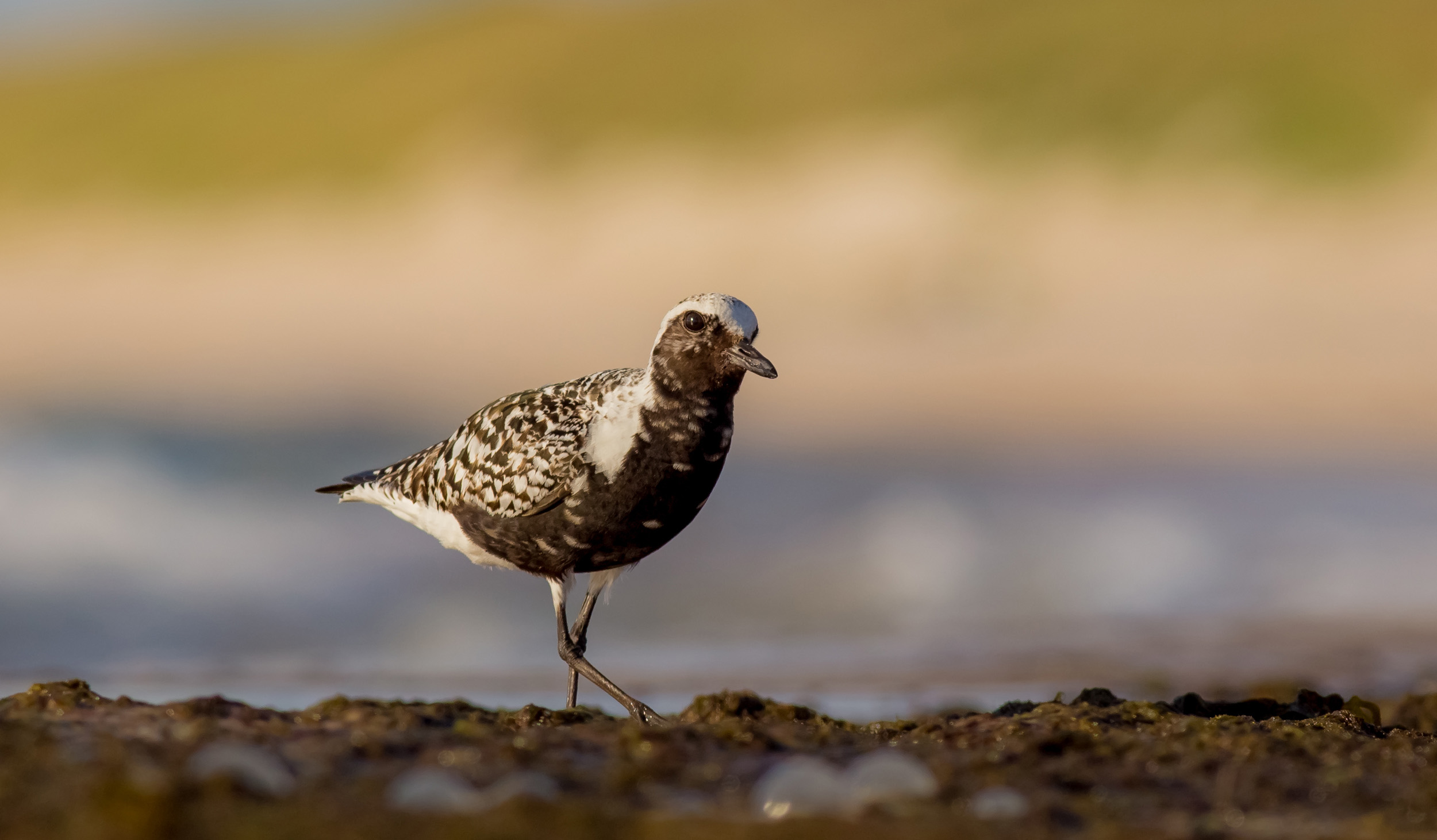How to identify
In summer, it has silver and black spotted upperparts, a black face, neck and belly. In winter, it loses the black feathers and takes on a browny-grey look. In both plumages, the rump is white and in flight in winter it shows distinctive black 'armpits'. Like most plovers it stands very upright and tends to run and then suddenly stop to feed. It is generally seen in small numbers, although flocks can form when there is a high tide.Key
- Resident
- Passage
- Summer
- Winter
* This map is intended as a guide. It shows general distribution rather than detailed, localised populations. - Jan
- Feb
- Mar
- Apr
- May
- Jun
- Jul
- Aug
- Sep
- Oct
- Nov
- Dec

